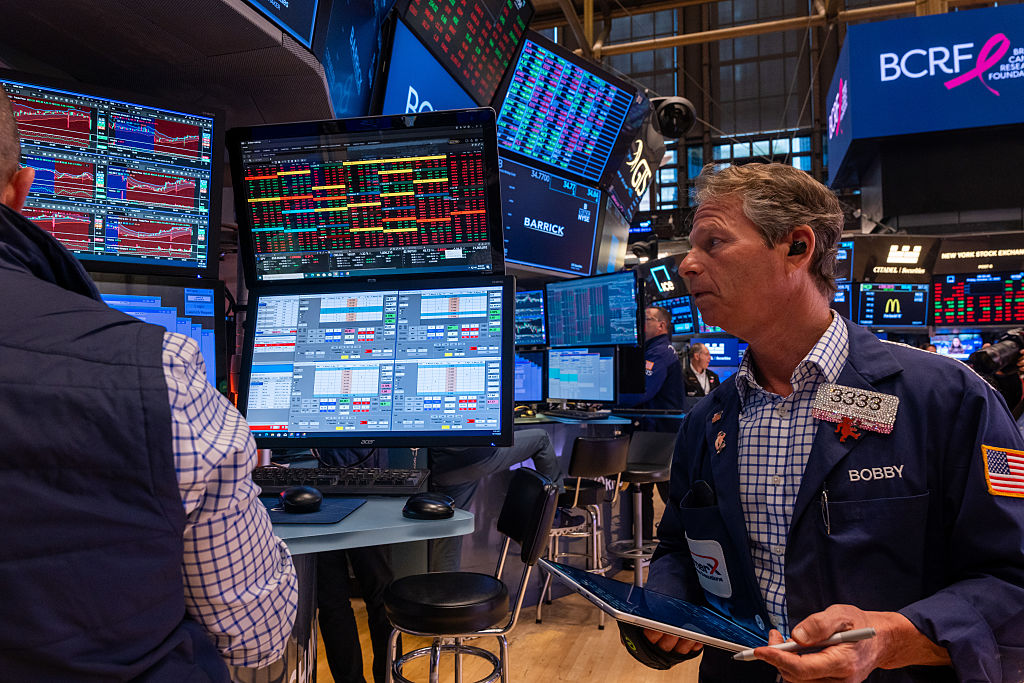How to map a ‘value path’ to riches
Putting money away regularly is vital for investment success.Phil Oakley explains the best way to do this.
One of the most important keys to investment success is also one of the simplest making sure you actually make the effort to save and put money away regularly for your future. But what's the best way to go about doing this?
One of the most popular ways to invest regularly is called pound cost averaging'. This is where you invest a constant amount of money each month, or every few months. The logic of the approach is that markets go up and down a lot, for a wide range of reasons, and it is virtually impossible for the private investor (or any investor, for that matter) to time their purchases so that they are always buying when prices are low.
So by putting your savings on autopilot, you sometimes buy things when they are cheap, and at other times when they are expensive. Over time you hope to smooth out the average cost of investing and boost your long-term performance.
MoneyWeek
Subscribe to MoneyWeek today and get your first six magazine issues absolutely FREE

Sign up to Money Morning
Don't miss the latest investment and personal finances news, market analysis, plus money-saving tips with our free twice-daily newsletter
Don't miss the latest investment and personal finances news, market analysis, plus money-saving tips with our free twice-daily newsletter
This method has a lot to commend it. It's almost a buy and forget' strategy and does a good job of taking the emotions out of investing. That's incredibly important, as often it's our emotions that drive our worst investment mistakes. However, as with most things in life, pound cost averaging is not perfect. That's because there are no rules for when to sell an investment. For example, during the late 1990s, you could easily have continued buying into overpriced stock markets, only to get badly burned when they crashed a few years later.
What to do
- Work out how much money you need to retire use an online calculator.
- Create your value path.
- Review your portfolio no more than every three months.
- Put proceeds of sold investments in a savings account to draw on later.
- Always use a tax sheltered account.
The best strategies are the ones that can help you buy when prices are low and sell when they get too high. One such strategy is known as rebalancing'. You set out target allocations for different investments in your portfolio (so 40% in shares, 50% in bonds and 10% in gold, maybe). Roughly once a year or so, you sell some of what has done well and buy some of what has done poorly, to keep your portfolio within its target allocations. So if at the end of the year, shares take up 50% of your portfolio and bonds 40%, you'd sell some shares and buy some bonds (assuming you are still happy with your allocation). Rebalancing has a decent track record of improving long-term returns and reducing risks something every investor should aim to do.
What if there was a strategy that could combine the best bits of pound cost averaging with the benefits of rebalancing? In 1991, Michael Edleson, a former chief economist at stock-exchange group Nasdaq, published a new strategy that claimed to do this: value averaging'.
With value averaging, you don't invest a fixed sum of money each month or quarter. Instead, the aim is to grow the value of your portfolio by a set amount. So rather than investing £100 a month via pound cost averaging, you aim to grow your portfolio's value by £100 a month.
Say you start the year with £10,000. By the end of January, you want your portfolio to be worth £10,100. If you've had a bad month, and its value has fallen to £9,900, you'd invest £200, to make it up to £10,100. If it's been a good month, and the value has risen to £10,200, you'd actually sell £100-worth of assets, to bring the value back down to £10,100, and put the money in a savings account.
This is forcing you to buy low and sell high as you go along in effect, constantly rebalancing your portfolio. The short-term results can be very impressive. Edleson compared value averaging with pound (or dollar, in his case) cost averaging for every year between 1926 and 1991, based on a $100 value increase each month. Value averaging won in 58 of the 66 years covered. The average annual return was 13.77% a year, against 12.61% for dollar cost averaging. And between 1990 and 2006, value averaging delivered annual returns of 9.4% against 8.64% for dollar cost averaging. This may not seem that big a gap, but it adds up over the long haul.
Over the longer run, basic value averaging doesn't do as well. That's because as the size of the portfolio rises, you need to adjust the desired increase in value. So you need to tinker with the strategy a little to make it work by creating a value path'. Edleson's book has a useful spreadsheet to help you work this out. Let's say you work out that you need £500,000 to retire. You plan to save for 30 years, assuming returns of 6% a year, with your contributions growing by 3% a year. After one year the target value of your portfolio is £4,531; after ten years, £67,876; and £212,722 after 20 years.
In other words, the value path just tells you what value your portfolio has to be to stay on track at any given point in time. You then buy and sell things accordingly. That makes this a particularly good strategy for meeting a savings target it forces you to work out your end goal, then work backwards to achieve it.
Of course, it does have some drawbacks. Not every strategy works all the time. And it requires much more monitoring of your portfolio and could end up costing more money due to regular buying and selling. (Pound cost averaging can be very cheap if you use regular investment plans that are available through brokers.) Depending on how volatile the markets are, you may end up having to make very big investments from time to time to keep the value of the portfolio on track. Also, selling chunks of a big portfolio may trigger capital-gains taxes so only use this strategy in tax sheltered accounts, such as individual savings accounts (Isas) or self-invested personal pensions (Sipps).
Get the latest financial news, insights and expert analysis from our award-winning MoneyWeek team, to help you understand what really matters when it comes to your finances.
Phil spent 13 years as an investment analyst for both stockbroking and fund management companies.
After graduating with a MSc in International Banking, Economics & Finance from Liverpool Business School in 1996, Phil went to work for BWD Rensburg, a Liverpool based investment manager. In 2001, he joined ABN AMRO as a transport analyst. After a brief spell as a food retail analyst, he spent five years with ABN's very successful UK Smaller Companies team where he covered engineering, transport and support services stocks.
In 2007, Phil joined Halbis Capital Management as a European equities analyst. He began writing for MoneyWeek in 2010.
-
 Why Trustpilot is a stock to watch for e-commerce exposure
Why Trustpilot is a stock to watch for e-commerce exposureTrustpilot has built a defensible position in one of the most critical areas of the internet: the infrastructure of trust, says Jamie Ward
-
 Tetragon Financial: An investment trust with stellar returns
Tetragon Financial: An investment trust with stellar returnsTetragon Financial has performed very well, but it won't appeal to most investors – there are clear reasons for the huge discount, says Rupert Hargreaves